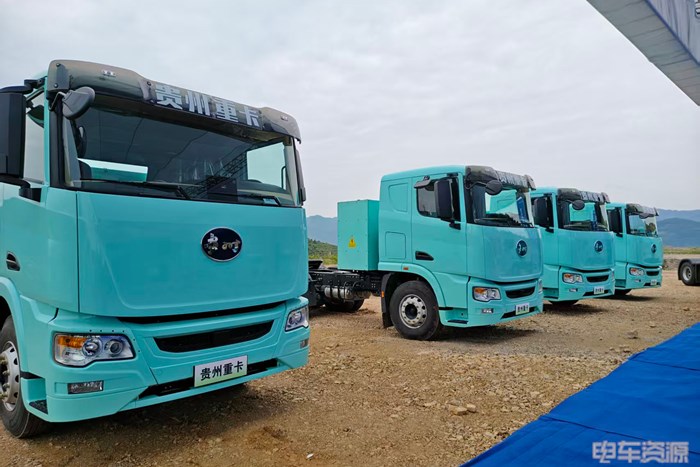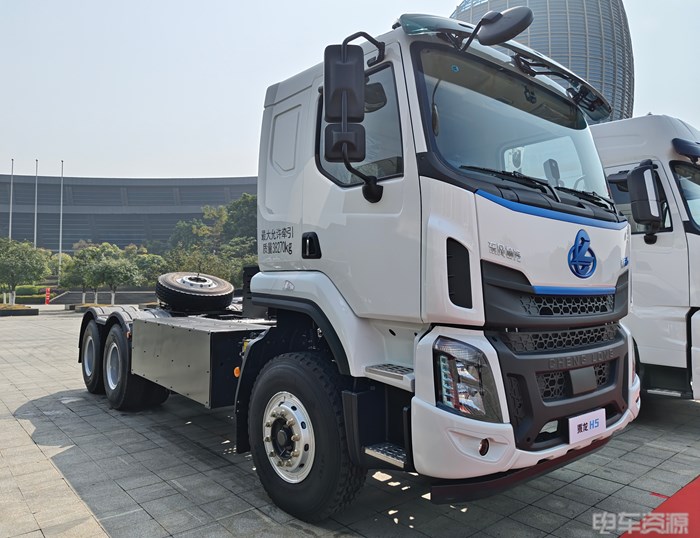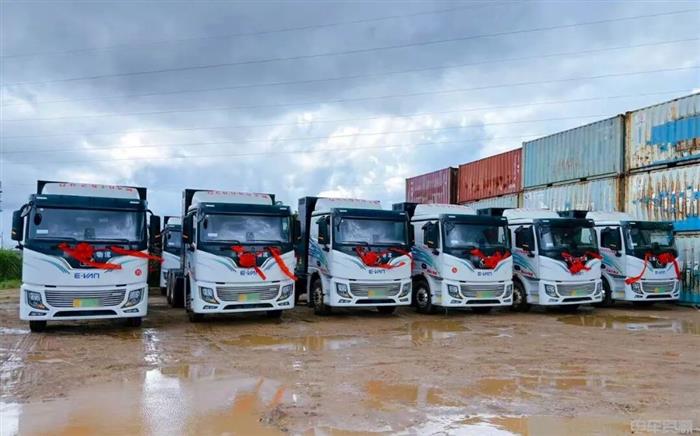CATL, FinDreams, REPT, Gotion High-Tech, EVE Energy: Who Will Electric Heavy Trucks Choose?
Under the dual drive of the "dual carbon" policy and the optimization of operating costs, the electrification transformation of heavy-duty trucks has become an inevitable trend, and electric heavy-duty trucks have also become a "hot" model in the market.
Recently, in the research on green heavy-duty trucks, it was found that many logistics and transportation companies have numerous questions regarding the core information such as range, performance, battery, and motor when transitioning from traditional oil and gas heavy-duty trucks to electrification. They are particularly confused about battery selection when purchasing electric heavy-duty trucks.
To address this challenge, this article will analyze from the dimensions of battery brand, battery type, battery capacity, and the compatibility with actual working conditions, helping users clarify the selection logic.
More recommendations on battery brands and battery capacity selection should be based on a comprehensive assessment of specific operating scenarios. We welcome truck friends to leave comments in the discussion area to share their actual usage experiences and endurance performance, so that we can choose a truly suitable battery solution for electric heavy trucks together.

Choosing a Battery Brand
The choice of battery brand directly affects the reliability of electric heavy trucks and the cost of subsequent maintenance.
In the heavy-duty truck sector, in the early days, battery supply was dominated by one company, with CATL capturing 80% to 90% of the market share. However, in recent years, companies like FinDreams Battery, REPT, Gotion High-Tech, and EVE Energy have accelerated their efforts, continuously launching new heavy-duty truck battery products, which are equipped on new or classic models, forming a competitive landscape where one leading player coexists with many strong contenders.
This means that when users choose heavy-duty truck batteries, they can rely on CATL's mature system to select leading brands for stability assurance. Additionally, they can flexibly match high cost-performance solutions from major brands like FinDreams Battery, REPT, Gotion High-tech, and EVE Energy based on their operational scenarios and budget costs.
According to research on green heavy trucks, some logistics companies reported that after choosing different battery brands for short-distance transportation, the performance of third-generation heavy truck batteries from various brands in terms of range decay control, low-temperature performance, and cycle life was quite similar, with minor differences.
This indicates that battery technology has entered a relatively mature stage, with the core differences between brands primarily reflected in the coverage of after-sales service networks, the intelligence level of battery management systems, and the ability of companies to adapt and optimize for specific regional operating conditions.
Due to the insufficient operational time of the third-generation heavy-duty truck batteries (3-5 years), the specific degradation data of batteries from various brands still require long-term observation.
According to statistics from Green Heavy Trucks, from January to August 2025, CATL's market share in the heavy truck sector saw a decline but still ranked first with over 60% market share. Meanwhile, brands such as Farasis Energy, Ruipu Lanjun, Guoxuan High-Tech, and EVE Energy have been continuously increasing their market shares with rapid momentum.

Selection of Battery Type
The current mainstream battery type for electric heavy-duty trucks is still lithium iron phosphate, which aligns with the high-intensity operation needs of heavy-duty trucks due to its high safety, long cycle life, and moderate cost advantages.
A very small number of vehicle models use ternary lithium batteries, mainly concentrated in specialized models or lightweight scenarios that require high energy density. However, due to cost and thermal management challenges, they have not yet been widely applied.
Based on practical applications and reputation, the vast majority of operators choose lithium iron phosphate batteries, as they exhibit excellent stability under high temperature and high load conditions. They have become the preferred choice for short-haul transportation scenarios such as enterprises, ports, and mines.

Battery capacity selection
In the past two years, the price of lithium carbonate has fallen, and the price of lithium iron phosphate batteries has also dropped significantly. When matching battery capacity for vehicles, there is a tendency towards large-capacity configurations to enhance operational efficiency and attendance rates. Large-capacity electric heavy trucks are also more favored by users, especially in medium and short-distance transportation scenarios where they perform outstandingly.
Large battery configurations have become a mainstream trend in the electric heavy truck market. However, what battery capacity is most suitable for specific configurations? Based on actual operating data and user feedback, Green Heavy Trucks offers a few suggestions:
For short-distance transportation within a unilateral distance of 50 kilometers, a battery capacity of approximately 282 kWh can meet the round-trip demand while reserving sufficient redundancy to cope with peak electricity consumption and low-temperature environments.
In medium and short-distance transportation scenarios with a one-way distance of 50-300 kilometers, it is recommended to configure a 400-525kWh battery. This configuration can achieve a round trip on a single charge and effectively cope with route fluctuations and increased seasonal energy consumption.
In scenarios involving single-sided transportation over 300-500 kilometers, it is recommended to configure batteries with a capacity of over 600 kWh. Some models may offer an optional 800 kWh ultra-large capacity solution to ensure continuous operation and range safety under extreme conditions.
For long-distance transportation scenarios exceeding 500 kilometers, electric heavy-duty trucks are currently only in trial operation on routes where the energy replenishment network is partially connected. They have not yet become mainstream applications, and traditional fuel heavy-duty truck transportation remains predominant.
The promotion of electric heavy-duty trucks in long-distance transportation is still limited by charging efficiency and the density of refueling facilities. An analysis in "Who Can Change the Situation of Electric Heavy-Duty Trucks as the 'Short-Distance King'?" highlights this issue, and we look forward to breakthroughs for electric heavy-duty trucks in the long-distance transport sector.
In the field of short-haul transportation, when selecting battery capacity, users also need to dynamically evaluate actual working conditions such as road conditions, load, climate, and charging frequency, and choose between charging or battery swapping modes to achieve cost-effective and efficient operation.
The battery configuration needs to be finely matched to the operational scenario to avoid over-investment or range anxiety.
The battery capacity of electric heavy-duty trucks is large and represents a significant asset. Choosing a well-known brand offers more assurance, as their after-sales service network is more extensive, effectively reducing the risk of breakdowns and improving vehicle availability. Mainstream brands have advantages in cell consistency, battery management system (BMS) optimization, and thermal management design, resulting in longer cycle life and higher residual value over long-term use.
At the same time, it is recommended that users conduct actual route transportation calculations before purchasing a vehicle, and reasonably select the battery capacity based on actual energy consumption data to avoid cost waste due to over-specification or insufficient range caused by under-specification.
Green heavy-duty trucks will also continue to research the deep integration of heavy-duty truck battery technology development and operational scenarios. By considering local climate conditions, energy replenishment infrastructure layout, and user driving habits, they will work with users to explore more efficient and economical electric heavy-duty truck application solutions, helping truck drivers achieve a win-win situation of cost reduction and increased efficiency alongside green operations.
【Copyright and Disclaimer】The above information is collected and organized by PlastMatch. The copyright belongs to the original author. This article is reprinted for the purpose of providing more information, and it does not imply that PlastMatch endorses the views expressed in the article or guarantees its accuracy. If there are any errors in the source attribution or if your legitimate rights have been infringed, please contact us, and we will promptly correct or remove the content. If other media, websites, or individuals use the aforementioned content, they must clearly indicate the original source and origin of the work and assume legal responsibility on their own.
Most Popular
-

Zf asia-pacific innovation day: Multiple Cutting-Edge Technologies Launch, Leading Intelligent Electric Mobility
-

Mexico officially imposes tariffs on 1,400 chinese products, with rates up to 50%
-

List Released! Mexico Announces 50% Tariff On 1,371 China Product Categories
-

Fire at Sinopec Quanzhou Petrochemical Company: 7 Injured
-

Argentina Terminates Anti-Dumping Duties on Chinese PVC Profiles! Kingfa Technology & Siemens Sign Digital and Low-Carbon Cooperation Agreement






